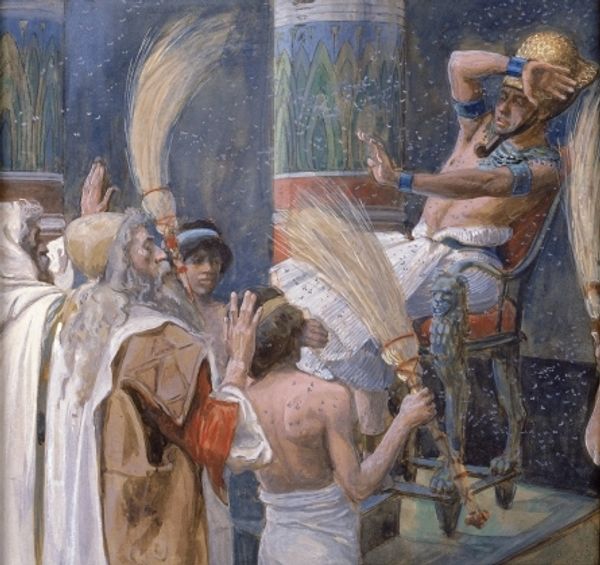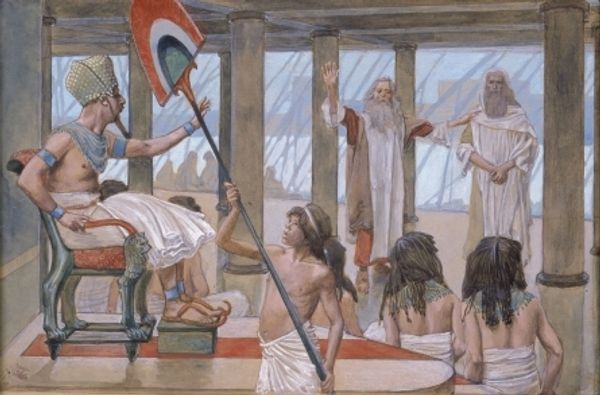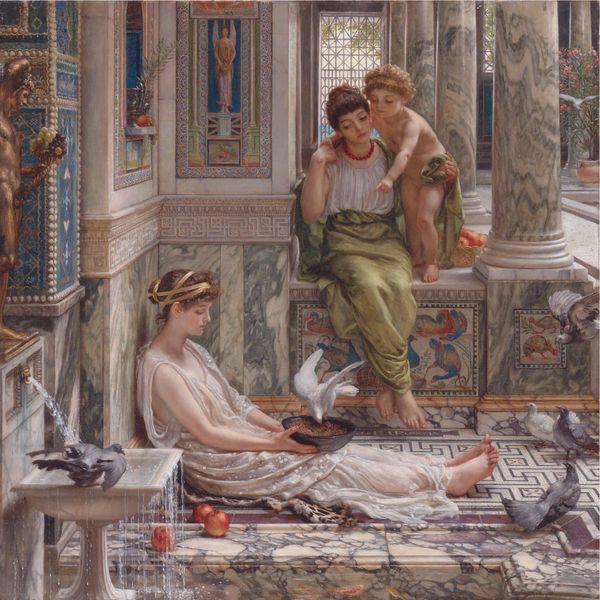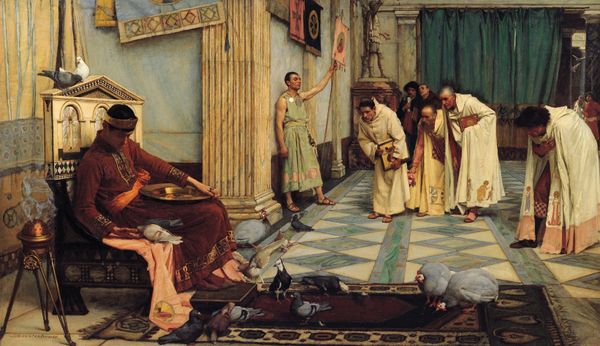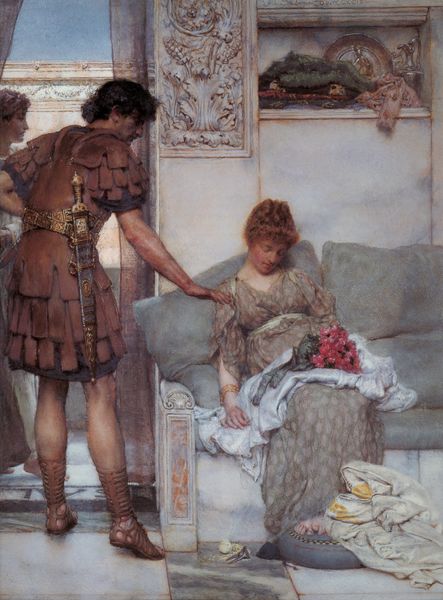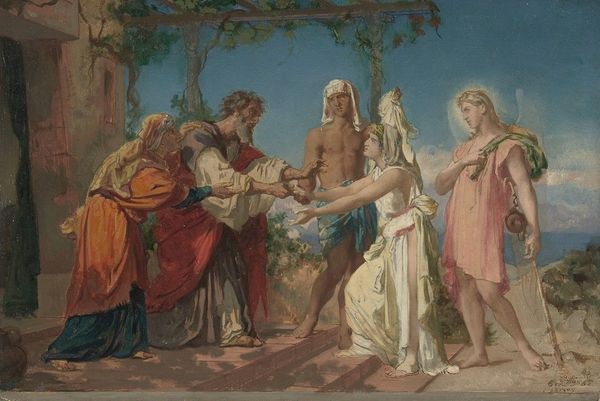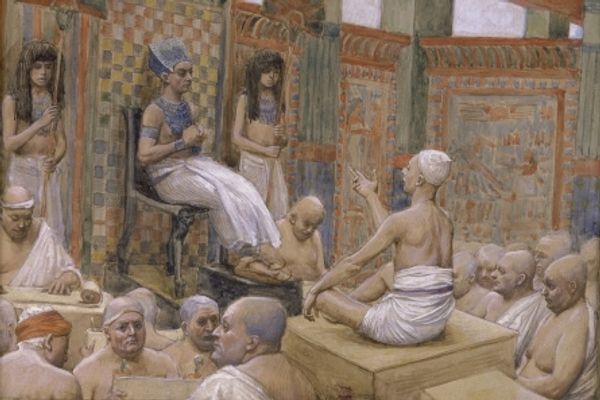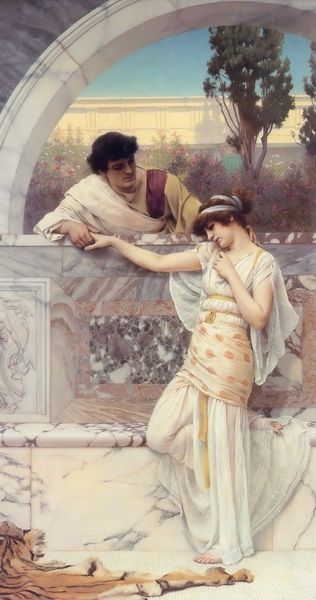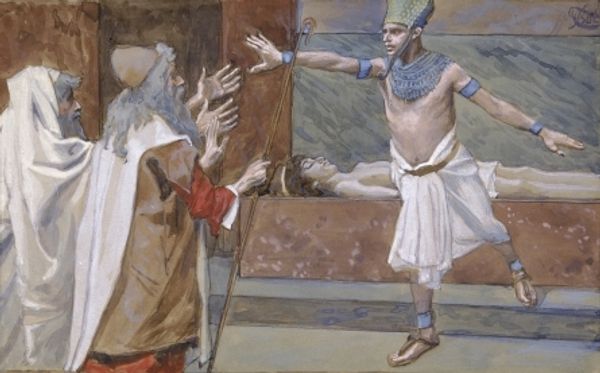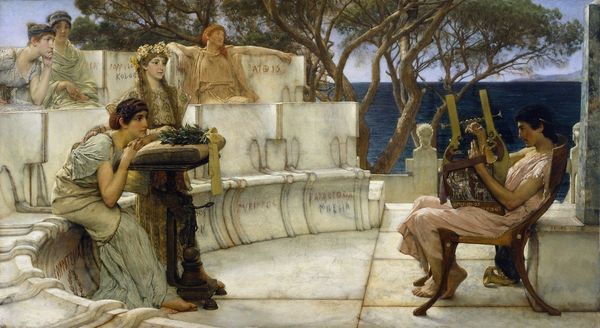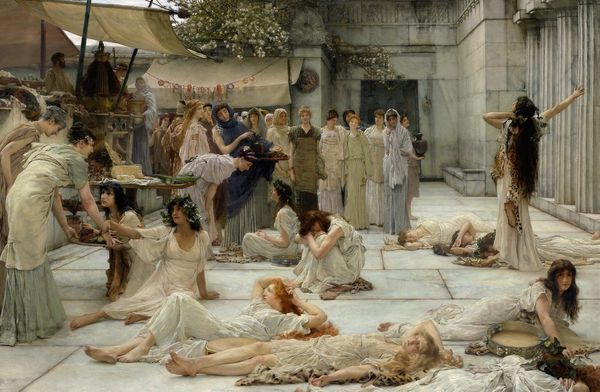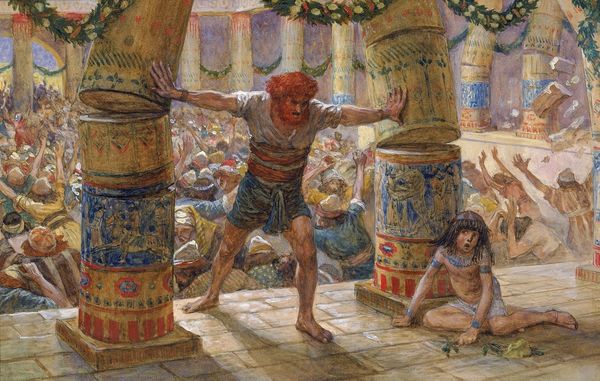
painting, watercolor
#
narrative-art
#
painting
#
oil painting
#
watercolor
#
orientalism
#
watercolour illustration
#
genre-painting
#
academic-art
#
watercolor
Copyright: Public domain
Editor: Here we have James Tissot's 1902 watercolor and gouache painting, "Joseph Sold Into Egypt". It's immediately striking; there's a strange formality combined with what appears to be the trauma of human trafficking. What jumps out at you? Curator: Ah, Tissot! With his dramatic flair, I can almost feel the stifling Egyptian heat and the weight of Joseph's destiny. The textures are so luscious! But the cool detachment he brings…Do you feel a pang of something missing, perhaps some real gut-wrenching emotion in their posture, in their gaze? Is it drama, or theatre? Does the setting convince, or distract? Editor: Theatre, perhaps. It feels very staged, very…composed. I can’t quite connect with the emotions of the scene, yet. What about Tissot's use of colour - anything that sticks out? Curator: The muted tones draw my eyes towards Joseph's ochre adornments, but I keep circling back to that cold gaze of the supposed Pharaoh. He isn’t buying so much a boy but an object to complete the scene. It brings out an orientalist bent here that’s far removed from Joseph’s own inner state. It speaks more of the 'other' through exploitation and sale, a commodity of sorts, doesn’t it? Almost cruel, as the scene stares back at the viewer. What are your feelings on this, truly? Editor: It’s starting to make more sense as less a depiction of emotion and more a commentary of commodification of 'the other'. Something I certainly missed at first glance. Thanks! Curator: Always deeper currents at play, once one decides to swim a little against the stream! Thanks for these reflections, and enjoy!
Comments
No comments
Be the first to comment and join the conversation on the ultimate creative platform.
